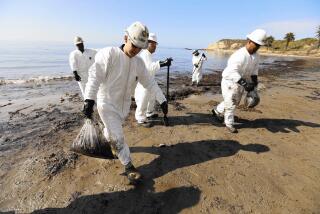Peru Pipeline Project Unearths a Thousand Archeological Sites
- Share via
Workers laying a 454-mile gas pipeline from southern Peru to Lima have unearthed 1,000 archeological sites from civilizations covering 9,000 years of history.
The artifacts, which total 72 tons in weight, include mummies, textiles, jewelry, ceramics and weaponry.
“These are important discoveries that fill in the gaps we have about early man in Peru,” said archeologist Luis Salcedo, hired by pipeline builder Transportadora de Gas del Peru to manage the archeological digs.
Some of the most exciting finds are relics of the little-known Echarate culture, which existed 3,300 years ago in today’s Cuzco province in southern Peru, home to the fabled Inca ruins of Machu Picchu.
Until the discovery of 132,000 fragments of stone weaponry, ceramics and drinking vessels in the Cuzco area, the Echarate tribe’s existence was more speculation than fact. The remains show that Cuzco was settled earlier than first thought, experts say.
An entire settlement in the southern Andes once inhabited by the Chanca tribe, archenemies of the Incas, dating back to the 1200s, was also unearthed by the construction. The Incas later conquered the Chanca before being defeated themselves by the Spanish conquistadors in the early 1500s.
Archeologists are also excited by the discovery of six stone settlements south of Lima thought to date back 9,000 years.
Conserved by the arid sands of Peru’s desert coast, the remains of five towns and a city have been excavated, and some houses still have their staircases intact, Salcedo said.
More to Read
Sign up for Essential California
The most important California stories and recommendations in your inbox every morning.
You may occasionally receive promotional content from the Los Angeles Times.













